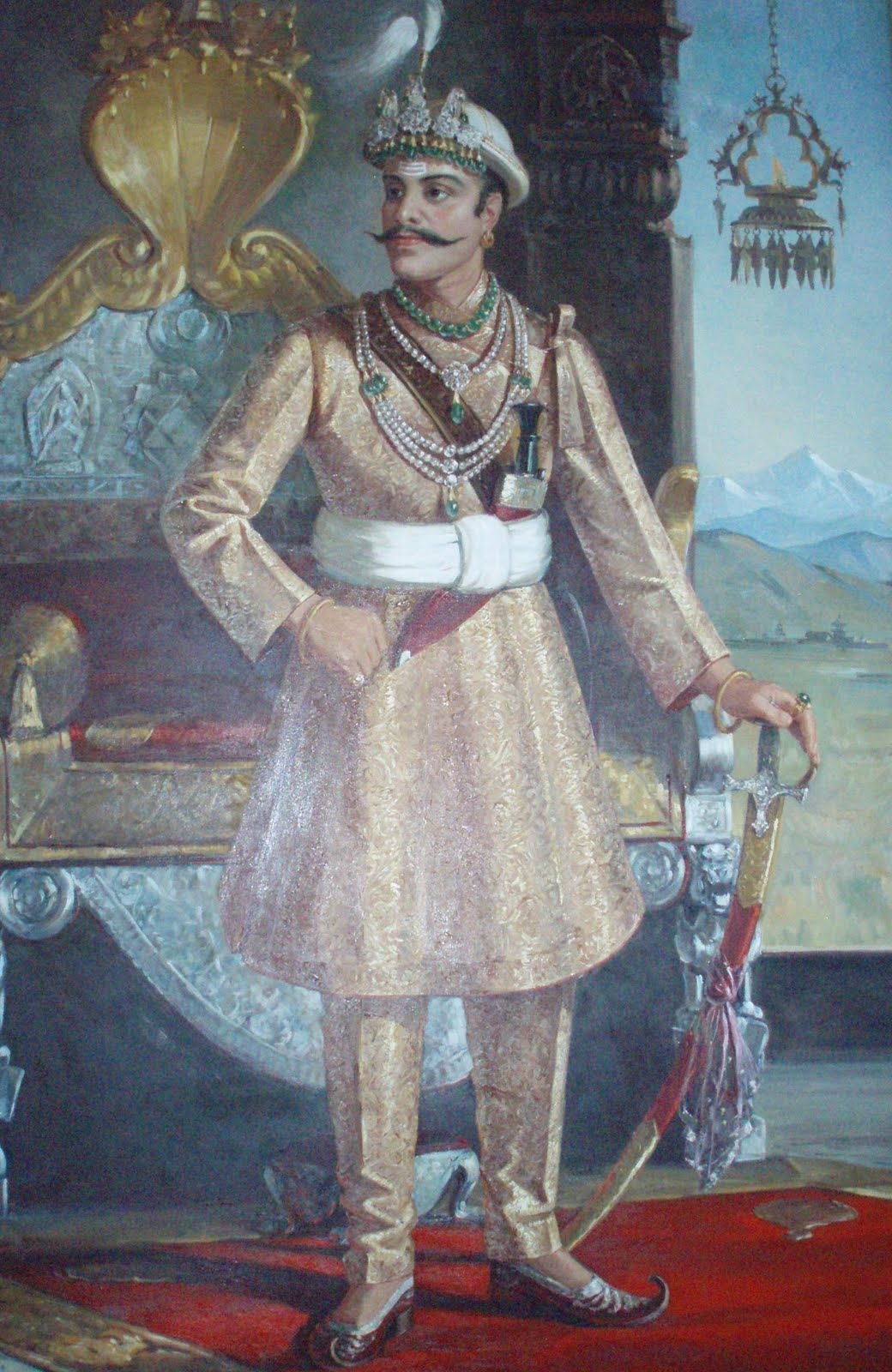
Most historical documents about Nepal have characterised Rana Bahadur Shah, the third king of the Shah dynasty of unified Nepal (1777-1799), in many dimensions. While many labelled him ‘Sanki’ or maniacal, irrational, stubborn, weak and funny, historian Chittaranjan Nepali defines him as skilful, witty and a statesman.
Rana Bahadur Shah succeeded to the throne at the age of two and a half years when his father, Pratap Singh Shah, son of Prithvi Narayan Shah, died prematurely in 1779 due to smallpox after ruling for only 36 months. Queen Rajendralaxmi, the mother of Rana Bahadur Shah, acted as his regent till 1785 before dying of tuberculosis, followed by his paternal uncle, Bahadur Shah, till 1794. Rana Bahadur Shah dismissed and captivated Bahadur Shah in April 1794 and later killed.
According to Nepali, Rana Bahadur Shah took swift and bold steps to break orthodox and superstitious practices of the society but faced stern opposition from the conservative society. One of the reasons for such revolt was the king’s marriage to a Brahmin widow, Kantiwati.
The marriage to Kantiwati Devi
Not much has been written about Kantiwati Devi Mishra. The existing texts refer to her as a young Maithil Brahmin widow who had come to the Pashupatinath Temple in Kathmandu. Rana Bahadur Shah, who already had two queens, Rajeshwari Devi and Suvarnaprabha, grew an infatuation with Kantiwati when he saw her and brought her to his palace against her wish. Kantiwati, being a widow, had vowed not to get remarried and therefore denied the offer of getting married to Rana Bahadur Shah.
However, some historians say that Kantiwati consented to marry only after the king agreed to the condition put forward by her to make their son the crown prince of the country. They got married in 1793 and gave birth to Givarn Yuddha Bikram Shah, who was declared the heir to the throne immediately after his birth. Rana Bahadur Shah already had two sons from Suvarnaprabha, namely Ranodyot Shah and Shamsher Shah.
Many historians say that Ranodyot Shah was the heir apparent of the king. However, Nepali dismisses the idea referring to the instruction in the big bell installed by the king at the Hanuman Dhoka Palace which mentions Suvarnaprabha as “Bhogya Rani” or a concubine and therefore making Ranodyot Shah illegible for the throne.
Significance of the act
The king, a Chettri, marrying a Brahmin widow was considered a ‘taboo’ at the time, and violating the social and religious customs was an intolerable step for the orthodox society. The declaration of the ‘illegitimate half-caste’ newborn as the crown prince infuriated the nobles of the societies more while some historians claim that the nobles agreed to accept Givarn Yuddha Bikram Shah as the riddance to the “insane king”.
But, Chittaranjan Nepali believes that the king was not insane but tactful and that the king was labelled in a partisan manner as mad because he defied the traditions. Nepali believes that Rana Bahadur Shah showed his anti-caste discrimination beliefs by constructing the temple of Jagannath in Thapathali in southern Kathmandu in 1797 along with the Bhairavi Chakra. The inscription in the Chakra reads as “People belonging to all caste are like Brahmins when initiated with the Bhairavi Chakra.”
Another step taken by the king was abdicating the throne in favour of Givarn Yuddha Bikram Shah, who was merely 18 months old in 1799. Nepali states that the pressure was mounting on the king from all fronts because of his anti-traditional states and was facing a political crisis. Rana Bahadur Shah abdicated his throne in doubt that his son might not be made the king after his death. Rana Bahadur Shah performed the coronation for Givarn Yuddha Bikram Shah and made the nobility pledge loyalty to the new king by making them sign a document.
The mad king

Rana Bahadur Shah did have a mental breakdown when his beloved queen Kantiwati died in 1799, around a year after his abdication. Kantiwati had contracted tuberculosis, an incurable disease at the time. By then, the former king had taken the name of Shri Param Nirgunanda Swami and was called upon as Swami Maharaj (the saint king). He had organised various Pujas (rituals in honour or pledge to the gods) wishing good health for Kantiwati while many physicians were also consulted.
When Kantiwati died eventually, Rana Bahadur Shah became sad and angry and punished the attending physicians and priests. Similarly, he ordered the destruction of many statues of gods and goddesses around the valley. He later went to Banaras in 1800 and stayed there for four years before returning in 1804. After repatriation, he took the position of Mukhtiyar, before being assassinated by his half-brother, Sher Bahadur Shah, in 1806. This event was ultimately pivotal for the rise of Bhimsen Thapa.
A commentary
Nepali believes that the ‘half-mad’, ‘insane’ and ‘lunatic’ labels given to Rana Bahadur Shah were an example of prejudice shown by historians to discredit the change that the king wanted to propagate, with some even ‘ridiculously’ claiming that the abdication was ‘the victory of the people’. Nepali states that the skilful arrangements of Rana Bahadur Shah to instigate his son as the king and the methodological and systematic steps against social traditionalism does not reflect lunacy but tactfulness.
Whether lunacy or statesmanship, the steps were taken by Rana Bahadur Shah against the tradition of caste were way ahead of his time. An inter-caste marriage, even the one between a Brahmin and a Chhetri or even between the two Brahmins with hierarchical differences, is still considered a taboo. Moreover, he married a widow at that time when it is still considered a taboo now is another bold step taken. Furthermore, he made sure that their son, labelled ‘illegitimate half-caste’, would be made the king by abdicating his throne and making a detailed document on how the kingdom would function during the time of his son during his childhood and acquired pledges from almost everyone.
This article is based on Reign and Abdication of King Rana Bahadur Shah by Chittaranjan Nepali in Mahesh Chandra Regmi’s Regmi Research Series Year 3 no. 1.


















